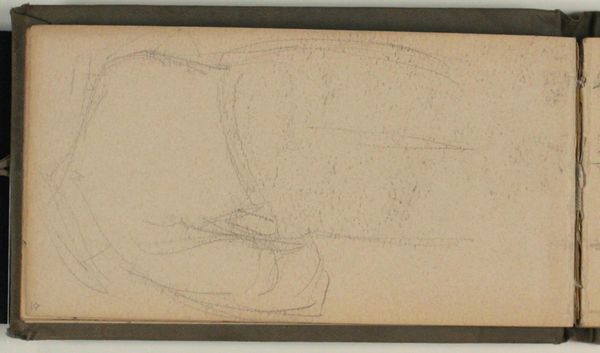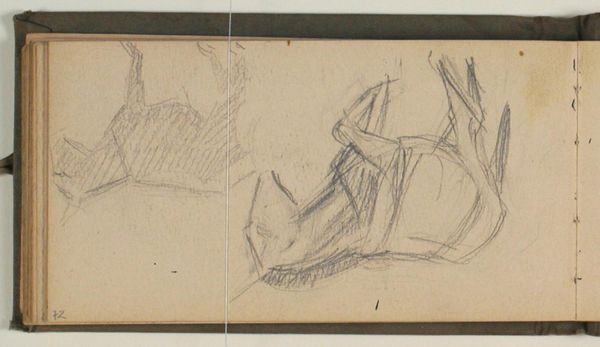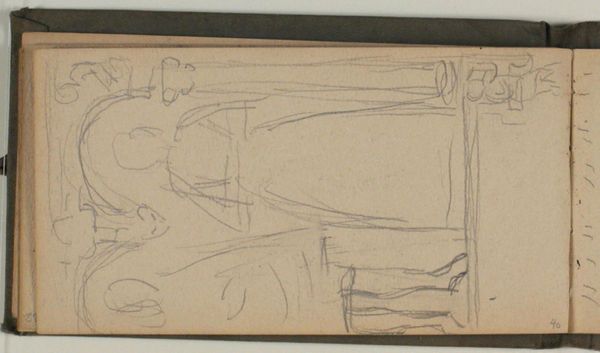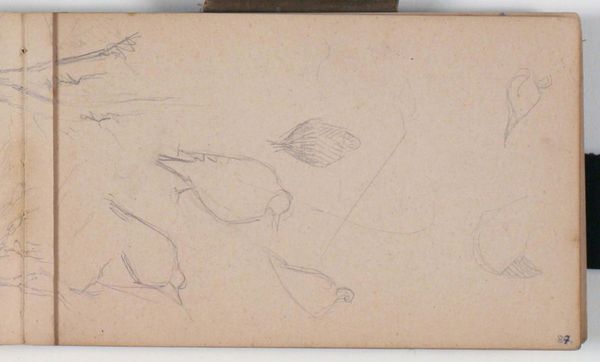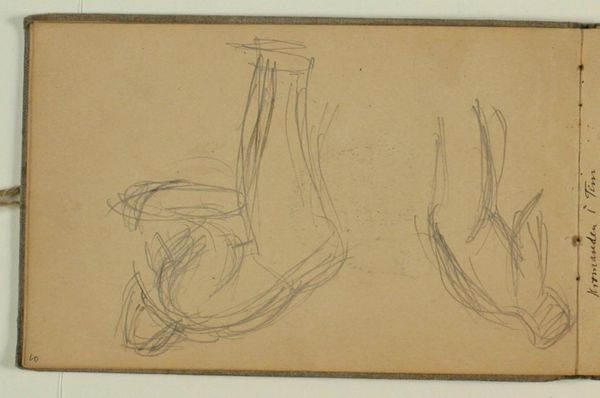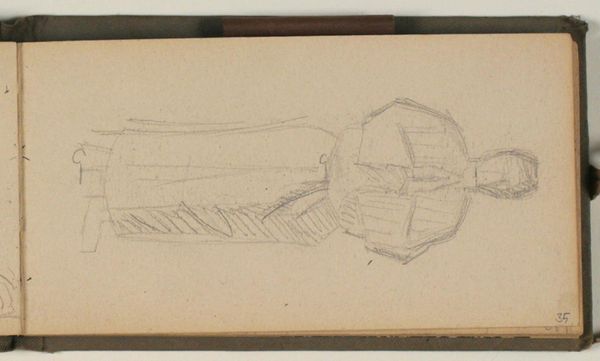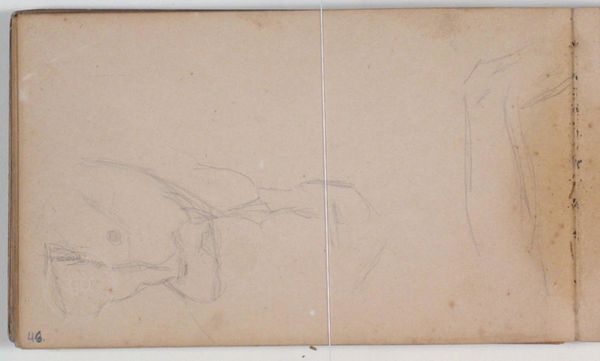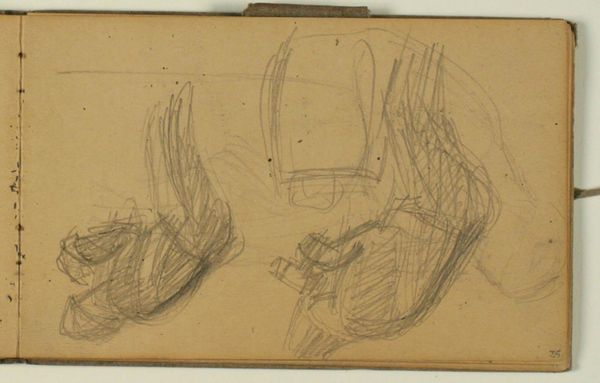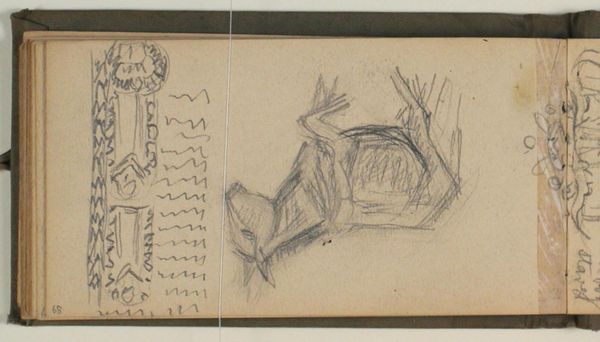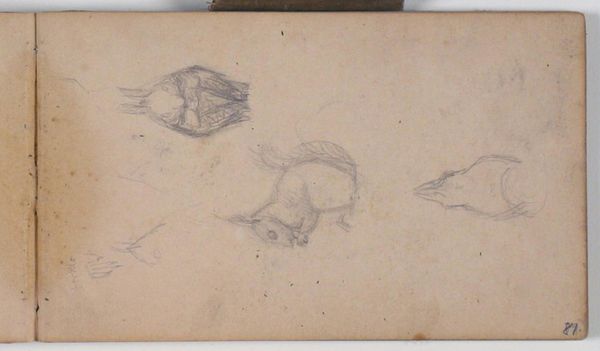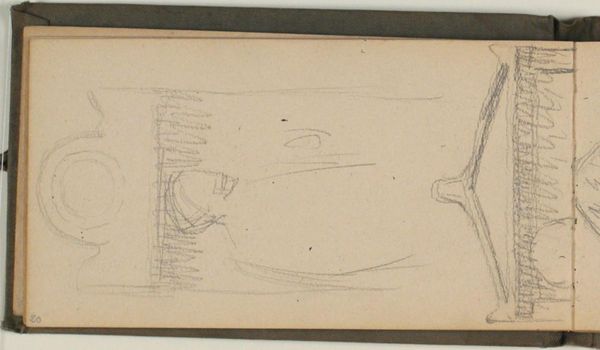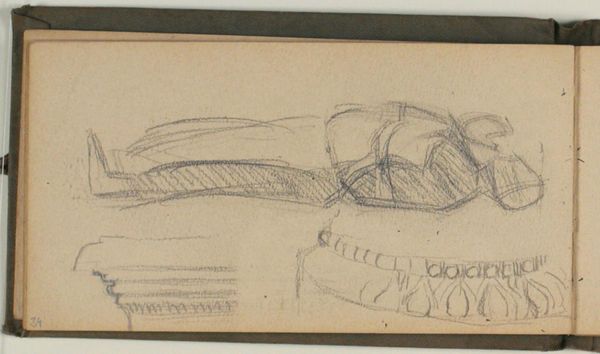
drawing, pencil
#
drawing
#
figuration
#
pencil
Dimensions: 92 mm (height) x 174 mm (width) (bladmaal)
Editor: This is Niels Larsen Stevns' pencil drawing "Study of a Donkey" from 1919, housed at the Statens Museum for Kunst. I find it interesting how such a quick sketch can still capture so much about the animal’s form. What stands out to you? Curator: What strikes me is the loaded symbolism we've historically projected onto donkeys. In religious contexts, it represents humility and service, think of Jesus entering Jerusalem. But culturally, especially from the 19th century onward, it morphed into a signifier for stubbornness or foolishness. This piece feels like an attempt to grapple with those conflicting interpretations through observation. Do you think the artist had any specific symbolism in mind? Editor: That’s a great point! I hadn’t thought about the donkey's symbolic weight. Given the date, 1919, right after World War I, perhaps the animal also stood for the plight of the common worker, burdened and unacknowledged? Curator: Precisely. The war reshaped symbolic vocabularies. Everyday objects and creatures acquired new layers of meaning tied to the experiences of trauma, resilience, and shifting social roles. Stevns, through a few carefully placed lines, hints at these layered associations. Editor: So, the apparent simplicity is deceptive; it’s a concentrated meditation on meaning and representation itself. I'm curious, the rendering makes the legs difficult to distinguish; is it possibly symbolic that the animal seems incomplete or encumbered? Curator: Indeed, it could indicate a struggle for definition, a questioning of inherent attributes. The lack of a fully defined form leaves the image open to interpretation, allowing viewers to project their own understanding onto it. What is clear to you about the piece, when looking closely? Editor: It really makes you wonder about the stories we tell ourselves through images. Thanks; I'm seeing how symbols change and stay the same. Curator: Precisely! Now we know more, not only about donkeys but about the symbolic role that any visual form plays over time.
Comments
No comments
Be the first to comment and join the conversation on the ultimate creative platform.
